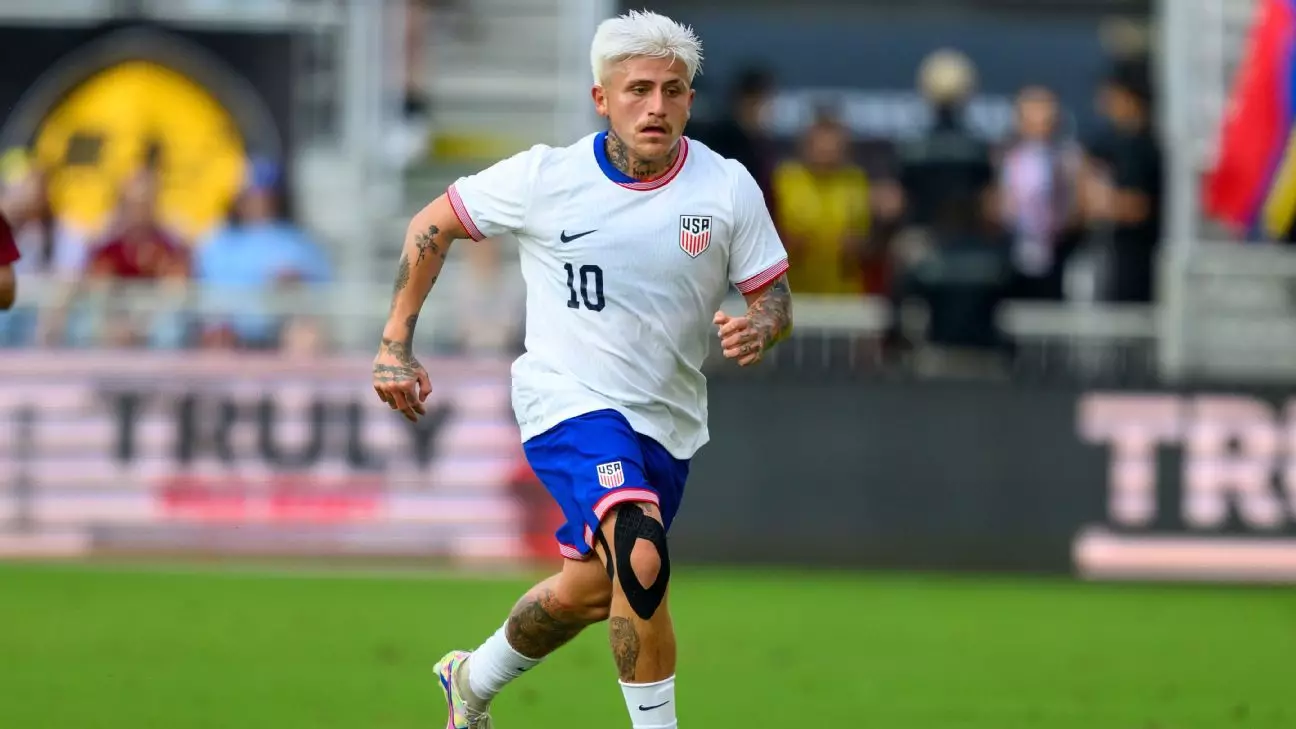Diego Luna’s path to professional soccer has been anything but conventional. At only 21, the Real Salt Lake midfielder embodies resilience and self-discovery, navigating challenges that often present themselves to young athletes. Unlike many of his peers, Luna has faced nuanced hurdles that have shaped his identity both on and off the field. Beginning with critical decisions made as a teenager to leave the San Jose Earthquakes academy for a greater opportunity at Barcelona Residency Academy, Luna’s journey can easily be characterized by his willingness to take risks. In training camps with the U.S. men’s national team, under the guidance of head coach Mauricio Pochettino, he continues to chase his aspirations while refining his craft, showcasing his knack for maintaining possession even in tight situations, evident during his debut match against Venezuela.
Luna’s attitude toward timing in life illustrates a mature understanding of professional sports. He described the importance of patience and preparation, emphasizing that opportunities arise when an athlete is prepared for them. Such admission not only reflects his journey but also highlights an essential quality of successful athletes: the ability to recognize one’s readiness for advancement. Engaging deeply in training and pushing his boundaries, Luna is always in pursuit of performance that consistently aligns with his aspirations.
When one observes Luna’s playing style and physical characteristics, it’s clear he stands out among his contemporaries. Critics have pointed out that he does not fit the mold of a typical American soccer player; Luna is often described as “a little bit different.” This term carves out a space in U.S. soccer lexicon for players like him, who display creativity in ways that might seem perplexing to traditionalists. The skepticism he faced early in his career regarding his physique serves as a snapshot of the rigid expectations within U.S. soccer. Feedback from U.S. Soccer evaluators once labeled him unfit—a misjudgment that only fueled his determination.
Tony Lepore, head of talent identification for the U.S. Soccer Federation, acknowledged the need for patience in recognizing diverse body types and playing styles. Players develop at varying rates, and Luna’s development narrative is a testament to the need for scouts and coaches to avoid bias, appreciating the multifaceted aspects that contribute to a player’s evolution. Through persistence, Luna’s talent became undeniable, leading him to impress selectors and earn a call-up to the U15 national team, illustrating that initial impressions can often be misleading.
Luna’s acumen is not solely relegated to the soccer field; it extends to his personal growth and mental health. His journey reveals an old soul within a young man, built on experiences that have forced him to mature more rapidly than many of his age. Raised in a soccer-centric family, Luna learned the value of hard work but also the necessity of emotional awareness. Despite being geographically distant from his family, his introspection led him to confront feelings of isolation, and he embraced therapy as a means to address the emotional challenges that come with professional sports.
The role of mental health, especially in sports, cannot be overstated. Coaches like RSL’s Pablo Mastroeni recognize the importance of nurturing players’ mental resilience, acknowledging that a two-way player must cultivate both physical abilities and mental acuity. Connections with family, even when strained, remain crucial for athletes, and Luna’s foray into therapy demonstrates a willingness to confront uncomfortable truths and a quest for self-improvement. He is not alone in this modern narrative of sports, where addressing mental health is becoming increasingly recognized as integral to the overall development of athletes.
Luna’s capacity to evolve extends beyond self-awareness to making calculated decisions each time a new opportunity presents itself. Having transitioned from the San Jose Earthquakes to playing professionally with El Paso Locomotive in the USL Championship, he thrived in an environment that encouraged creativity. The freedom granted to him there was essential, as he transitioned into a space where he could nurture his skills. His success at El Paso, with 13 goals in 41 matches, paved the way for his current stint with Real Salt Lake, resulting in a remarkable first year filled with achievements, including the coveted Young Player of the Year award in MLS.
Looking towards the future, Luna finds himself at a crossroads influenced by his Mexican-American heritage, which presents potential opportunities to play for either the U.S. or Mexico. As he navigates this decision, his loyalty to the U.S. national team speaks volumes about his commitment. While he remains open to possibilities, Luna understands the significance of patience in a profession that often demands immediate results.
Actively engaging in his personal growth while excelling in soccer sets a precedent for the next generation of athletes. With maturity and self-awareness at the forefront of his journey, Diego Luna exemplifies that success is not solely about accolades and recognitions. It’s also about the lessons learned, challenges faced, and the unwavering trust in one’s path.
